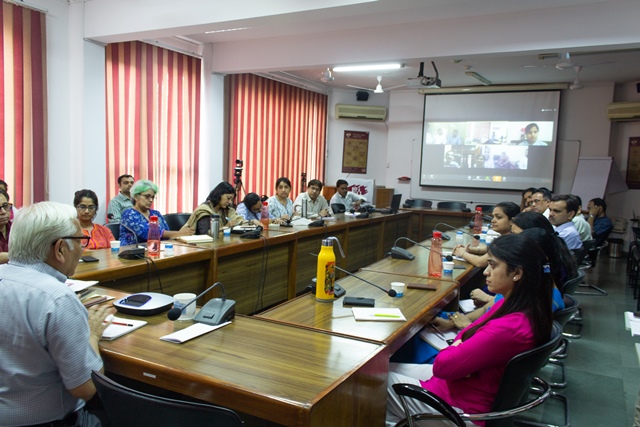| Date 16-Apr-2018 to 16-Apr-2018 |
Location PRIA, Conference Hall |
Format Local |
This was an interesting sharing seminar by Dr. Rajesh Tandon on this Monday!
He started it with one of the most popular stories from Indian/Hindu Mythology, Samudra Manthan and different interesting items/people came out of it. Then it went to explain why Shiva being called as Neelkath (Blue necked) and how he churned Nectar and poison to save the world. Shiva had to consume it since nobody was ready to drink poison came out of Vasuki, the venomous snake and kept this between the throat and it became blue resulted called “Neelakanth”.
Further, Dr Tandon linked how it is relevant in PRIA’s context. He explained that for long- term impact, churning is required. Nowadays speaking truth to power is like a poison! Neither to spit out nor to eat. As of you know, since inception, PRIA is working for social transformation of the society for a better world. It has seen that in our day to day life, Power relations are not the same everywhere. There are differences based on caste, wealth and of course religion in the Indian context. Since PRIA is also worked/working towards betterment of local self-governance system through Panchayati Raj Institutions/ Gram Sabhas, we envisage changes from the bottom, Villages/ Gram, Sabhas, but for a substantial change, relation of power has also to be changed. Whether it is in Gram Sabha or during the preparation of Settlement Improvement Committees (SICs) as these are some good examples of Collectivisation.
On the context of Supply-Demand issue, Dr. Tandon described how local reality could be reached to the authority(ties) who are more powerful. Then, he gave the examples of Land Alienation study done by PRIA in the early 80’s. During that era of no- mobile, no-RTI, no-social media, getting information from the authorities was very tough. One the system was fully kept under manuscripts and no one was allowed to see them other than the important officials. Therefore, nobody was ready to give any data on land acquisition to help the Farmers so that they could get a basic minimum compensation. In that situation, PRIA developed a new strategy to get data about the land record and accordingly, contacted those tehsildar(s) who were bit sympathetic to the farmers in their miseries. Then, to formulate this and share information, PRIA organised a workshop with the tehsildars. Thus the PRIA team learned lot of techniques of land acquisition matters and its nitty-gritties and further empowered farmers to get their due compensation from the government.
Secondly, he discussed on this Churning the Truth by PRIA in relation to its work on the Occupational Health and Safety (OHS) studies in the late eighties and early nineties. Earlier no-one was agreed to consider the diseases byssinosis or silicosis as an occupational disease. Therefore, government was not ready to give compensations to the affected people. After PRIA’s interventions and a meeting between officials and affected people, this was made possible.
Thus two important projects PRIA done in the past shared to learn and implement the same methodology for the current team in the ongoing projects.
This exactly was a true learning seminar for the staff (including our field team members through video conference, who attended the programme and produced a healthy and fruitful discussion.